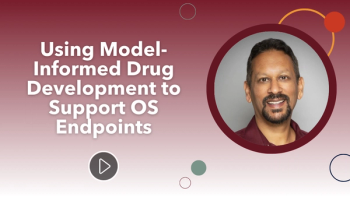
- Applied Clinical Trials-11-01-2011
- Volume 20
- Issue 11
An Update to Real Innovation
The Innovative Medicines Initative has launched several projects to improve quality of life.
There is a risk that the currency of terms like "innovation" will be devalued by over use in Europe. Hardly a week goes by without some new claim to have harnessed innovation to Europe's economic recovery, or to solving the problems of demographic change, or to building sustainable health systems.
Peter O’Donnell
Amid so much hype and loose rhetoric, one organization at least has come a little closer to matching words with deeds. The grandly-titled Innovative Medicines Initiative (IMI) last month provided an overview of some of its achievements—and some of them merit recognition.
This $2.4 billion program claims to be already generating "tangible results that will improve Europeans' quality of life," notably through better and safer medical treatment. It has been linking industry, academic teams, regulators, and patients' organizations in joint research and training projects.
One of the consortia has created a tool to help understand diabetes and to test potential new drugs in laboratory conditions—an achievement recognized by the scientific community as a breakthrough in diabetes research. This IMIDIA consortium has generated cell lines that continue to live in the laboratory in test tubes and that closely resemble the beta-cells that malfunction in the human pancreas of patients with diabetes. The cell lines represent an invaluable new tool that was so far missing in diabetes research, allowing studies that otherwise would have to be done on fresh cells extracted from the human body. The current lack of understanding of the mechanisms of the failing insulin production and the death of the beta-cells in diabetes hampers the development of better treatments, and the new cell lines will be used to test potential new drugs against diabetes and to further unravel the causative mechanisms.
Unsurprisingly, given the growing incidence of diabetes, there is more than one project studying the condition and its impacts. The SUMMIT consortium is developing methods to identify patients with a high risk of developing complications of diabetes, such as stroke or problems with the heart, kidneys, and eyes—complications that account for more than 10% of healthcare costs in Europe. Following extensive literature searches to identify changes in the body that predict such complications, researchers have identified a strategy for a new computer model to assist in prediction. They have also started studies with patients aiming to identify non-invasive markers of complications in the blood vessels.
Another consortium has contributed to a better understanding of the mechanisms of chronic pain. The EUROPAIN project has revealed similarity between pain caused by chemotherapy and cold hypersensitivity. Scans have identified changes in the brain activity of patients with low back pain that can be used to predict pain intensity. Researchers have also identified several molecules in the body that could be potential new targets for the treatment of pain.
Companies have pooled data to create the largest known database of studies on schizophrenia, including information on more than 23,000 patients from 67 studies in more than 25 countries, offering industry and academics unique opportunities for the development of tools and models that will help find targeted treatments for schizophrenia. This consortium has also assembled a database with data on 2,500 patients with major depression, which they are scanning for new clues to treat the disease in patients that do not respond to existing therapies and for predicting the response in those who do. Genetic analysis of DNA-samples of these patients has already identified targets for predicting the response to treatment and the limits of current predictions.
Because more than seven million Europeans suffer from Alzheimer's disease and other forms of dementia, the PHARMA-COG consortium is developing methods to identify the most promising candidate drugs earlier in the development process. The researchers have proven that sleep deprivation induces cognitive impairment similar to that of patients with Alzheimer's disease in human volunteers, and have shown that commercially available drugs for Alzheimer's disease can reverse this cognitive impairment. This suggests that sleep deprivation could be used as a model of cognitive impairment to test the effectiveness of new candidate drugs.
A major new study of severe asthma is being conducted by the U-BIOPRED consortium, which has recruited the first of over 1,000 subjects. Data related to blood, tissue, lung function, exhaled air, and the airways, plus reports of people's own experiences, will be used to build up a detailed picture of each individual's condition. By comparing data from hundreds of people, the team hopes to characterize different kinds of severe asthma, paving the way towards personalized treatments for patients—an undertaking that would be impossible for any research team on its own. The consortium has already produced an international consensus statement for the diagnosis and definition of severe asthma, which represents a key step towards the development of innovative patient-tailored therapies.
Several of the projects will be useful across a broad range of development, by allowing the early elimination of non-viable potential treatments. A new computer model brings new accuracy to the prediction of whether a candidate drug is likely to cause serious heart problems in patients, and should help researchers pick up drug safety problems earlier on in the drug development process. The work of this eTOX consortium could reduce the wasted efforts in pursuing drug candidates that eventually fail because they turn out to be toxic to the heart.
A consortium coyly rejoicing in the title of SAFE-T is developing biomarkers to similarly improve allocation of research resources to the most promising candidates. Given that fewer than 10% of all drug candidates tested on patients complete clinical development in current circumstances, because of potential drug safety issues, SAFE-T has evaluated and prioritized 153 potential biomarker candidates for tests with patients that could help predict drug-induced injury of the kidney, liver, and vascular system. A scientific strategy adopted by the consortium for the testing of biomarkers on patients' blood and other samples has been agreed with the European Medicines Agency and the US Food and Drug Administration.
A project known as MARCAR has developed and proved the effectiveness of a method that helps identify chemical changes in the chromosomes that are related to non-genotoxic carcinogenesis. The detection of these epi-genetic changes can be used as early biomarkers to predict if drugs in development are likely to cause cancer.
In parallel, a number of education and training projects are providing platforms for students and scientists that wish to develop their career in the area of drug discovery and development.
IMI is funded jointly by the European Union (with more than $1 billion in cash) and the European Federation of Pharmaceutical Industries and Associations (EFPIA) (with more than $1 billion of in-kind contributions). By sharing research results that have not been brought together previously, IMI project partners say they are building new methods, models, and tools that will speed up the development of novel therapies. A valuable side-effect of IMI is that it is also making Europe a more attractive place for private investment in innovation.
As Magda Chlebus, Director of Science Policy at EFPIA, puts it, IMI is providing proof of concept for new public-private collaborations in pharmaceuticals. Using open collaboration to define and address common challenges, it offers a neutral platform for dialogue defining a common agenda and shared priorities for industry and academia.
"IMI works," she told an audience in the European Parliament. "It is producing tangible deliverables after less than two years—a pace that no other funding scheme allows." In her view, "IMI connects the dots between science, health, and growth."
Maria Vidal, a Senior European Union official responsible for medical research, insisted that research performed in IMI is based on a scientific agenda, prepared through consultation with all relevant parties, and focused on benefits to the patient. The research tools it develops can be rapidly and widely taken up within the scientific and industrial community, as a tailor-made intellectual property policy provides support.
Mary Baker, President of the European Brain Council and of the European Federation of Neurological Associations, expressed her admiration for the IMI's approach to meeting "the grand challenge of society" that ill health represents. "This requires cooperation and partnership from a range of stakeholders," she said, and—as IMI is demonstrating—"creating high performing networks is essential."
So far, 23 projects have been launched in 2009 and 2010. A further wave of projects, due to be launched shortly, will include autism, tuberculosis, and vaccine safety. Early in 2012, IMI will launch a new call for proposals.
Peter O'Donnell is a freelance journalist who specializes in European health affairs and is based in Brussels, Belgium.
Articles in this issue
almost 14 years ago
Clinical Trial Recruitment in Dermatologyalmost 14 years ago
Predicting Successful Site Performancealmost 14 years ago
Business and News Update November 2011almost 14 years ago
Seamless eClinical Solution from Perceptivealmost 14 years ago
Ethics of Biobank Research Come Under Scrutinyalmost 14 years ago
BRIC Countries Contribute to Researchalmost 14 years ago
eClinical: A Yellow Brick Road?almost 14 years ago
Clinical Grant Expenditures are Stabilizingalmost 14 years ago
Patients, Investigators Seek Flexibility at FDANewsletter
Stay current in clinical research with Applied Clinical Trials, providing expert insights, regulatory updates, and practical strategies for successful clinical trial design and execution.






.png)



.png)



.png)
.png)
